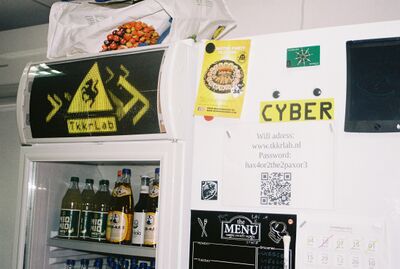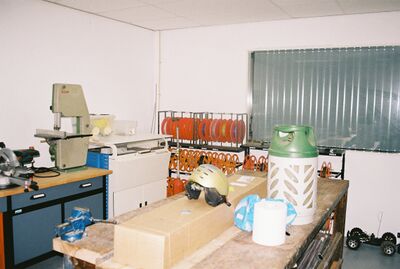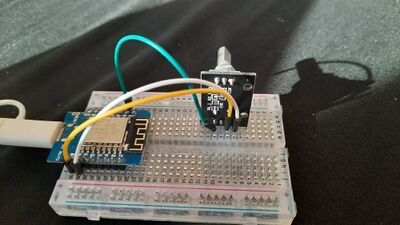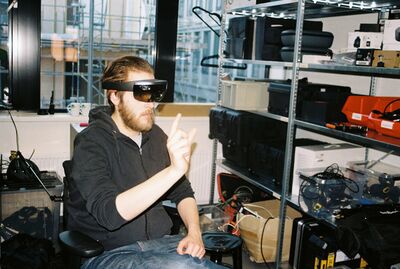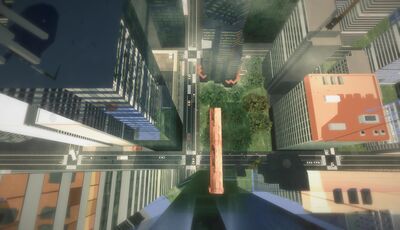Development Week Tetem: Difference between revisions
| (6 intermediate revisions by the same user not shown) | |||
| Line 18: | Line 18: | ||
background-color: #f7f7f7; | background-color: #f7f7f7; | ||
'> | '> | ||
[https://pzwiki.wdka.nl/mediadesign/Louisa-thesis_outline Thesis Draft] | |||
=LASER 2 100 2= | =LASER 2 100 2= | ||
| Line 30: | Line 31: | ||
There are different sensors for different purposes. In order to measure the business of roads and weight of trucks, pressure sensors are placed below the asphalt. Similar sensors are placed below public parking lots in order to measure when a car has not moved for a long time. There are sensors that measure water levels in order to prevent flooding. Parking garages scan license plates, which opens up a lot of personal data to the municipality, letting them know who is visiting and from which country. There is also an app called SMART app, which allows users to get green lights on bike lanes when biking through the city with the app on their phone. Another set of sensors are WiFi trackers, which have been implemented in public spaces in order to measure the amount of people at the spaces. This has actually escalated into a law suit from the Dutch Data Protection Authority (AP), since citizens where identifiable throughout the different WiFi spots, allowing for individuals to be tracked throughout the city, instead of simply being anonymously counted per location. | There are different sensors for different purposes. In order to measure the business of roads and weight of trucks, pressure sensors are placed below the asphalt. Similar sensors are placed below public parking lots in order to measure when a car has not moved for a long time. There are sensors that measure water levels in order to prevent flooding. Parking garages scan license plates, which opens up a lot of personal data to the municipality, letting them know who is visiting and from which country. There is also an app called SMART app, which allows users to get green lights on bike lanes when biking through the city with the app on their phone. Another set of sensors are WiFi trackers, which have been implemented in public spaces in order to measure the amount of people at the spaces. This has actually escalated into a law suit from the Dutch Data Protection Authority (AP), since citizens where identifiable throughout the different WiFi spots, allowing for individuals to be tracked throughout the city, instead of simply being anonymously counted per location. | ||
In conversation with Mettina, we discussed the difference between manipulation and persuasion when it comes to playful applications and secondary objectives. | In conversation with Mettina, we discussed the difference between manipulation and persuasion when it comes to playful applications and secondary objectives. | ||
| Line 44: | Line 43: | ||
==Prototyping== | ==Prototyping== | ||
At night, I drove to TkkrLab to meet Dave, who showed me around the different maker spaces of the lab. | At night, I drove to TkkrLab to meet Dave, who showed me around the different maker spaces of the lab. | ||
Funny enough, Dave was the one who initiated the law suit against WiFi tracking, as he is very concerned about privacy within new technological applications. He figured out that the mac ip of the people stayed the same throughout the different spots and therefore the movements of individuals were traceable throughout the city. He felt bad for the big fine, as this was not his intention, all he wanted to do was protect the privacy of the citizens. | Funny enough, Dave was the one who initiated the law suit against WiFi tracking, as he is very concerned about privacy within new technological applications. He figured out that the mac ip of the people stayed the same throughout the different spots and therefore the movements of individuals were traceable throughout the city. He felt bad for the big fine, as this was not his intention, all he wanted to do was protect the privacy of the citizens. | ||
[[File:000022.JPG|400px|center|thumb|TkkrLab]] | |||
[[File:Tkkrlab.JPG|400px|center|thumb|TkkrLab]] | |||
[[File:20220310 150727.jpg|400px|center|thumb|TkkrLab]] | |||
==Invisible Borders in XR Games== | ==Invisible Borders in XR Games== | ||
The next morning, I visited the XR lab at Saxion, where I met with | |||
[[File:000019.JPG|400px|thumb|center|XR lab Saxion]] | |||
The next morning, I visited the XR lab at Saxion, where I met with Stefan Talman who set up a computer for me with various VR and AR glasses. I told him that I am curious about invisible borders and the idea of overlapping maps. He told me that they like to let newcomers play the game "Richie's Plank", where you step into an elevator in VR and step out on a wooden plank on top of a skyscraper. You have to dare to jump off the building. This was incredibly hard for me, even though I was well aware that in reality I was standing inside a big room with carpet flooring. I would describe it to the sensation of falling in dreams, the emotions of fear are real, but somehow watered down, less intense as they would be in reality. It was almost impossible for me to step off of the plank in VR, I only managed after I took a step off and felt the solid ground of my actual environment. | |||
[[File:Richiesplank.jpeg|400px|thumb|center|Richie's Plank Experience]] | [[File:Richiesplank.jpeg|400px|thumb|center|Richie's Plank Experience]] | ||
| Line 62: | Line 72: | ||
==References== | ==References== | ||
[https://www.sciencedirect.com/science/article/pii/S1364815220309129 Virtual River Game] | |||
[https://youtu.be/gQYsUjT-IBo Arduino Node.js HTML Tutorial] | |||
[https://escaperoom.nl/the-dome/ Escape Room The Dome] | |||
[https://www.tellerreport.com/tech/2021-05-02-the-municipality-of-enschede-is-fined-600-000-euros-for-wi-fi-tracking.H16S1Tov_.html Law Suit Wifi Tracking Enschede] | |||
</div> | </div> | ||
Latest revision as of 20:07, 16 March 2022
LASER 2 100 2
Introduction
During my development week at Tetem, I was hoping to get new insights on the different topics I am currently researching as part of the Experimental Publishing Master of PZI. My main research question was "What are moments the boundaries of the magic circle become blurry in public space", with various sub-questions addressing intentional player movement in game design as well as smart city technology. Throughout the week I had the chance to visit an XR lab, a game design studio and a hackerspace, next to conversations with smart city researchers, the municipality of Enschede, immersive theatre maker, various game designers. I was curious about subtle ways both game designers as well as urban planners are using in order to herd players/citizens to designated areas on the map. For my practical prototype, my goal was to make a connection between Arduino input and a html page, which would make the start of an automated city game.
In the following text I have compiled a recap of the different conversations and encounters of this week, in order to document the knowledge and references that have been shared with me by the experts.
Smart City Technology
My first meeting took place on the evening of the 7th March with Mettina Veenstra (lector Smart Cities Saxion) & Angela Rijnhart (Ethics Committee Secretary and Strategic Advisor municipality Enschede). I was curious about the current status of smart city technology, what is implemented and why? What are future plans? Angela was able to answer this question, talking me through the different types of sensor networks interlacing the inner city of Enschede.
There are different sensors for different purposes. In order to measure the business of roads and weight of trucks, pressure sensors are placed below the asphalt. Similar sensors are placed below public parking lots in order to measure when a car has not moved for a long time. There are sensors that measure water levels in order to prevent flooding. Parking garages scan license plates, which opens up a lot of personal data to the municipality, letting them know who is visiting and from which country. There is also an app called SMART app, which allows users to get green lights on bike lanes when biking through the city with the app on their phone. Another set of sensors are WiFi trackers, which have been implemented in public spaces in order to measure the amount of people at the spaces. This has actually escalated into a law suit from the Dutch Data Protection Authority (AP), since citizens where identifiable throughout the different WiFi spots, allowing for individuals to be tracked throughout the city, instead of simply being anonymously counted per location.
In conversation with Mettina, we discussed the difference between manipulation and persuasion when it comes to playful applications and secondary objectives. If an app openly discloses that it is meant for the player to become more healthy, and will do so in a fun way that does not directly relate to health topics, this would be persuasion. But if there would be an app which makes people move through the city and do tasks under the veil of play, with a secret secondary motive, f.e. getting people to bring life to empty areas of town or spending extended times in shopping streets, this would be manipulation. Mettina is very active in designing playful interventions for groups which help reimagine public space, including approachable data visualisations. https://www.storytellingwithdata.com/
Non-Linear Narrative Tools within Interactive Experiences
In the morning of my second day, I met Niels Leenders from Gamelab Oost. I had a interesting conversation with him about non-linear storytelling methods, and accepting different player behaviours moving through the intended paths within a game. He introduced me to the concept of 1+1+1=3, which addresses environmental storytelling and the way how the players make their own assumptions based on objects and clues they encounter. He also explained to me that there is no need for players to have insight into the world building, it can exist as the invisible foundation which connects landmarks and events in the storyline in a cohesive and logical order.
In the afternoon, I had a video call with Avinash Changa, an immersive theatre maker. We talking about his most recent play involving different perspectives and VR, called 'Orphée | L'Amour | Eurydice'. In this piece, visitors can choose which role they would like to embody, and depending on their choice, will either go through the experience in VR or audio based. We had an interesting conversation about non-linear narratives and tools which help involve participants in the storyline without going to far off the scripted path. In Avinash's play, participants would unknowingly become performers and dancers to the other group, by using the movement based interface within VR. To him, the narrative tool 'string of pearls' is powerful, as it defines core moments of the storyline which every player should experience to some degree, allowing for some small deviation and variation per stage next to those key moments. This allows the player to feel a sense of agency and choice, without loosing a sense of immersion and reason. He also talked me through ways of creating an illusion of a bigger space in VR, making people feel like they are moving through many rooms of a building even though they might be walking in circles in real life.
Prototyping
At night, I drove to TkkrLab to meet Dave, who showed me around the different maker spaces of the lab. Funny enough, Dave was the one who initiated the law suit against WiFi tracking, as he is very concerned about privacy within new technological applications. He figured out that the mac ip of the people stayed the same throughout the different spots and therefore the movements of individuals were traceable throughout the city. He felt bad for the big fine, as this was not his intention, all he wanted to do was protect the privacy of the citizens.
Invisible Borders in XR Games
The next morning, I visited the XR lab at Saxion, where I met with Stefan Talman who set up a computer for me with various VR and AR glasses. I told him that I am curious about invisible borders and the idea of overlapping maps. He told me that they like to let newcomers play the game "Richie's Plank", where you step into an elevator in VR and step out on a wooden plank on top of a skyscraper. You have to dare to jump off the building. This was incredibly hard for me, even though I was well aware that in reality I was standing inside a big room with carpet flooring. I would describe it to the sensation of falling in dreams, the emotions of fear are real, but somehow watered down, less intense as they would be in reality. It was almost impossible for me to step off of the plank in VR, I only managed after I took a step off and felt the solid ground of my actual environment.
Later one he made me play Half-Life Alyx, in order to show me how the game makers dealt with the limitations of movement of the player in an open world game. The player might be in a very confined space in real life, so the VR experience needs to accommodate that. I was amazed by the realism in the game, and depth to the objects surrounding me. A really cool thing was to be able to pick up markers and add to the marker drawing on the dusty window.
Serious Games
For my last meeting the day after, I visited Robert-Jan den Haan at the University of Twente. He designs serious games for environmental solutions, and he explained his recent project 'Virtual River Game' in depth. We talked about the technical elements and workings of the game, as well as its psychological impact and communicative powers. The way the game board is set up is a wooden table on which modular panels of different heights are arranged to form the terrain of a riverbed. A webcam films the underside of the panels to recognize the different types, for example water or a certain type of grass, and then translates it into a live projection mapping back onto the terrain which visualised the flow of the water according to the current arrangement. Robert-Jan explained to me that this game is a very functional tool to bring different stakeholders together and involve them into the design of the river beds, especially since not everyone speaks the same language. It is intuitive and inviting, combining tactical game pieces and imageries of real landscapes. As I was talking about my own project and the idea of having a web game incorporate a map which represents real areas of the city, he told me about this escape room called The Dome, which is in Amersfoort. Appearantly there is a moment during the gameplay where you enter a living room that looks completely normal, no hints of any puzzles or clues, until you start playing the game console. A pixel Mario type game opens up, in which you move in a room which resembles the room you are in. As you jump and unlock this, the actual room you are in in the physical work starts changing as well. I got super excited about this as it really encapsulated my concept, with the only different being that I would like to extend the physical game space into the city streets.

